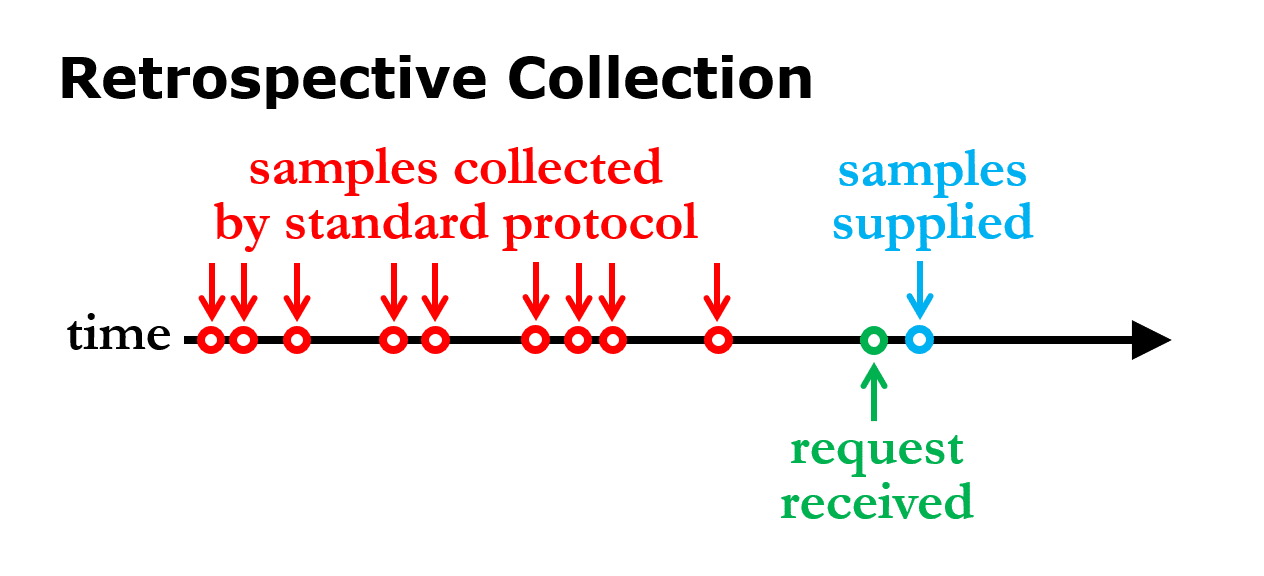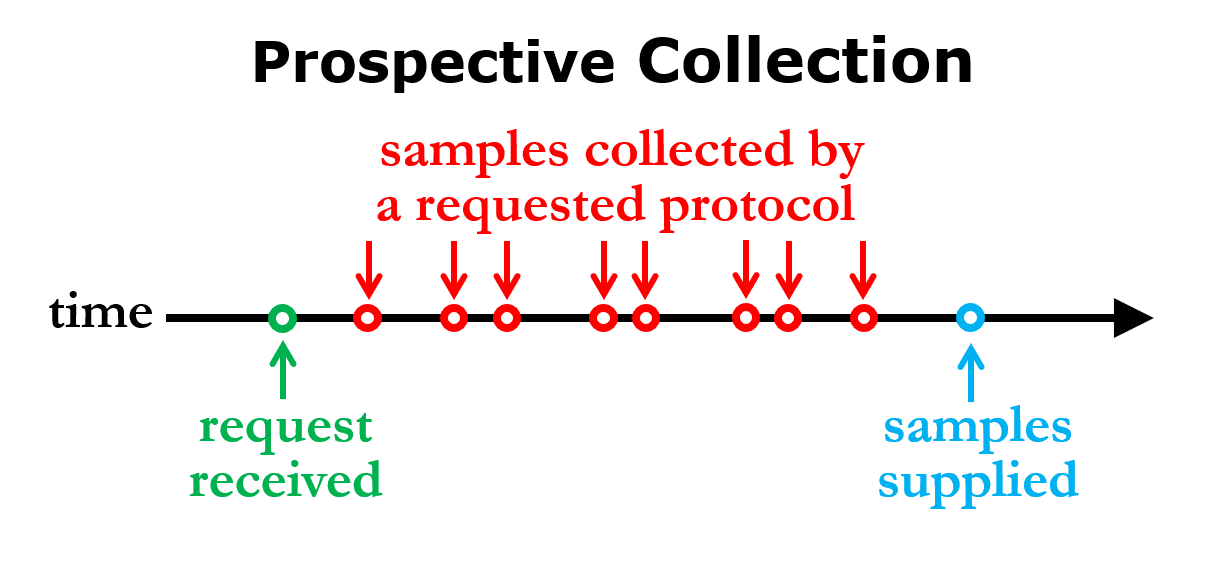Prospective vs Retrospective Sample Collection
When choosing between prospective vs retrospective sample collection, it’s essential to consider how each method impacts your access to samples collected exactly as you need.
Comparing Prospective vs Retrospective Collection Methods

Retrospective Collection
Retrospective collection is the traditional method used in biobanking, where samples are collected and stored ahead of time in anticipation of future research requests. The main advantage of this approach is the immediate availability of well-annotated samples, which may have taken months or even years to collect and prepare.
However, this method has limitations. Since samples are collected in advance, it follows a ‘one size fits all’ approach, which may not align with the specific needs of all requesters. This can be inefficient and costly, especially if many stored samples are never used. Additionally, stockpiling or ‘biohoarding’ samples is considered unethical and should be avoided.
Prospective collection
In contrast, prospective collection occurs only after a request has been made. This approach is essential when fresh, viable tissue is required or when the needed samples are not already available in the biobank. One of the key benefits of prospective collection is the customization it offers. The requester can specify:
- Which types of samples are collected
- Which collection protocols are followed
This tailored approach ensures that the samples perfectly align with your research needs, providing greater flexibility and precision compared to retrospective collection.

A Video Comparing Prospective vs Retrospective Collection
Recommendations For Prospective Collection
If you believe prospective collection is the best option for your research, it’s important to plan ahead. Start by contacting an academic biobank and working with them to initiate your collection. On the Biosample Hub platform, over 75% of biobanks offer prospective collection services, making it easy to tailor sample collection to your exact specifications.
References
Catchpoole D. ‘Biohoarding’: treasures not seen, stories not told. J Health Serv Res Policy. 2016 Apr;21(2):140-2. doi: 10.1177/1355819615599014. Epub 2015 Aug 5. PMID: 26248620.
Grizzle WE, Sexton KC. Commentary on Improving Biospecimen Utilization by Classic Biobanks: Identifying Past and Minimizing Future Mistakes. Biopreserv Biobank. 2019 Jun;17(3):243-247. doi: 10.1089/bio.2018.0080. Epub 2018 Dec 1. PMID: 30508389; PMCID: PMC6588113.

